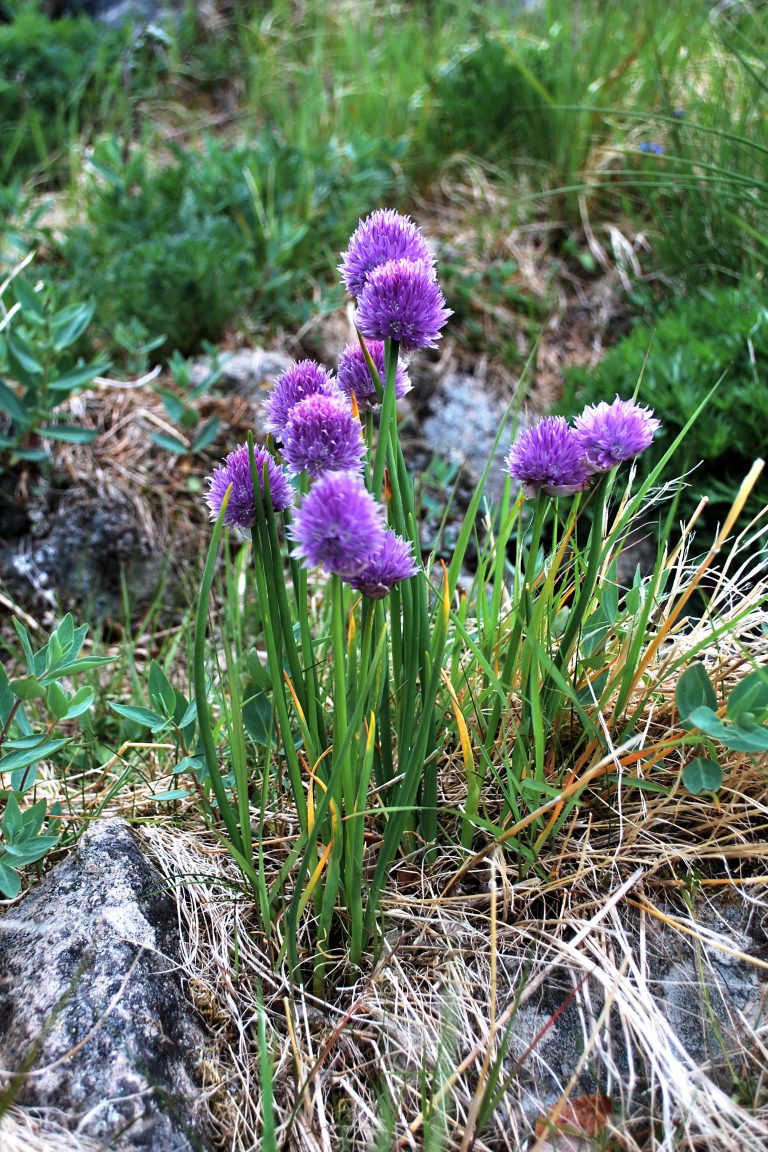Chukchi: майолят (majollet)
Naukan: майуӷлак/майуӷлук (mayughlak/mayughluk)
Russian: дикий лук (dikij luk)
English: chives
Naukan:
In Naukan, these were harvested in the Akuliik Valley, by the side of a small stream. People harvested the leaves and left the bulbs to regrow. The leaves were chopped into small pieces and mixed with salt to store dry in jars. People would eat them with walrus meat. Currently some people still find them in other locations and eat them in the traditional manner.
В Наукане этот лук собирали в долине Акулиик, недалеко от ручья. Перья лука собирали, а луковицы оставляли для размножения. Перья мелко нарезали и смешивали с солью, затем хранили в банках. Ели его с моржовым мясом. Сейчас некоторые по-прежнему находят его уже в других местах и готовят по традиционному рецепту.
Chukchi:
These grow in rocky areas and by streams in select places. People often have to travel to gather them. They are more plentiful in the interior than on the coast. Chukchi people gather the leaves (and sometimes flowers) as food. Elders said, in the old days, people stored them in pypy (seal pokes). Now some people store them in modern freezers, or cut them and salt them to store in jars, a practice borrowed from Russians. Others, particularly in the village of Lorino, add them as seasoning to fermenting roseroot (Rhodiola) tops. Some people add them to ypatyn, boiled willow leaves stored moist. They can be eaten with meat or added to salads.
Растет в скалистых местах и вдоль ручьев. Чтобы его собрать, часто приходится ходить на большие расстояния. В тундре его растет больше, чем в прибрежных областях. Чукчи употребляют листья (а иногда и цветы) в пищу. Старики говорили, что в прежние времена их хранили в пыгпыг (мешках из нерпичьих шкур, снятых чулком). Теперь некоторые хранят их в современных морозильных камерах или нарезают и солят, чтобы хранить в банках – обычай, позаимствованный у русских. Другие, особенно в поселке Лорино, добавляют их в качестве приправы в юңъэв (квашеную родиолу). Некоторые добавляют их также в ыпатын – вареные листья ивы, хранящиеся во влажном виде. Их можно есть с мясом или добавлять в салаты.



